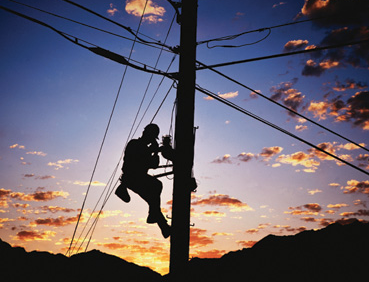Hurricane Sandy: Litmus Test for America's Utilities
By Jen Alic at OilPrice.com
 About this time last year, Americans lost faith in their power companies, which failed to respond effectively to restore power outages resulting from a storm. This past summer, a series of outages under less dire weather circumstances demonstrated that the country’s electricity distribution network was bad and getting worse.
About this time last year, Americans lost faith in their power companies, which failed to respond effectively to restore power outages resulting from a storm. This past summer, a series of outages under less dire weather circumstances demonstrated that the country’s electricity distribution network was bad and getting worse.
Today, as some 60 million people face power outages with the onslaught of Hurricane Sandy, which hit the Eastern Seaboard on Sunday, power companies are expressing confidence that they are up to the latest challenge put forth by Mother Nature. There is little public optimism to support this confidence.
Hurricane Sandy’s 900-mile storm front has already sent tidal surges over the stretch of seaboard from Delaware to New York, and its full impact was not expected until later on Monday, sparking mass evacuations along the coast and a shut-down of metropolitan transit. The National Guard has been deployed and airports ordered to close. Experts expect the storm will reverberate as far as the Great Lakes, of Michigan, Illinois and Wisconsin.
The power outages had already begun on Sunday, with 1,312 homes and businesses without power, mostly in Virginia Beach and the Outer Banks of North Carolina.
So, the National Guard is on top of things, but are the utility companies? They say they have made improvements since last year—though this was not evident during the series of outages this summer.
Despite their confidence, power giants servicing the Eastern Seaboard such as Consolidated Edison Inc., Northeast Utilities, and Public Service Enterprise Group Inc. are already warning customers that they expect power to be out for as long as 10 days from Washington to New England. Is this “advance” warning an improvement?
Communication and coordination have apparently been improved “a lot”.
This summer saw customers and regulators come down on the utilities hard—though perhaps not hard enough—for their slow response to storms in June and August, both of which saw some 4 million people without power for more than a week.
The simple task of tree-trimming had been neglected. It is an expense the power giants weren’t willing to absorb and had gotten away with in a poorly regulated environment. Since then, there has reportedly been an uptick in tree-trimming, while precautions have also been taken to prevent flooding of substations.
This time around, however, the US presidential elections are at stake. It may be impossible to vote.
The only electric light at the end of the tunnel? October 1000, the great electricity transformation.
In the second week of October, the US Federal Energy Regulatory Commission began enforcement of Order 1000, the backbone of a major transformation of the US electricity market. With electricity demand expected to grow by about 1.1% year on year through 2030 and the current state of affairs unable or unwilling to deal with the fall-out from storms, like Hurricane Sandy, a transformation is necessary, and even urgent (ask anyone living on the Eastern Seaboard today).
The situation is this: around 70% of US power lines and transformers are too old (about 25 years), while 60% of circuit breakers are about three decades old. Managing or averting severe blackouts will take over $6.5 billion in investment—and the privately-owned power utilities certainly don’t want to foot to bill (not even for tree-trimming). But the losses in the event of a major power outage are greater and run in the billions.
Related Article: Flaring Increases in the US Due to Low Natural Gas Prices
Related Article: Why Shale Oil Will Never be a Game Changer
Picture from GeekOSystem



